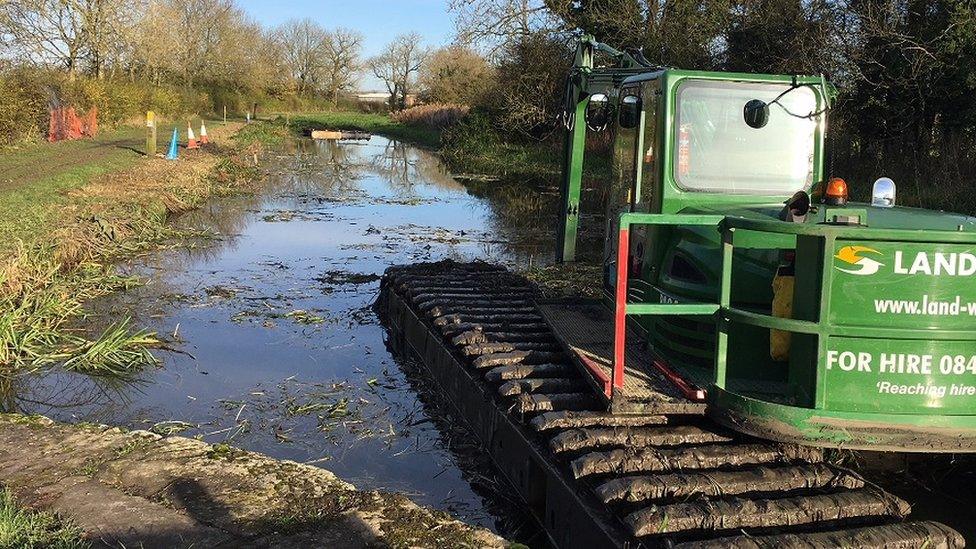Pocklington Canal sections dredged for first time in 100 years
- Published

The work is on a non-navigable stretch of the canal
A section of canal is being dredged for the first time in over 100 years to provide silt for farming and help wildlife to thrive.
Pocklington Canal, in East Yorkshire, is to have a mile-long non-navigable section cleared by an amphibious dredger.
About 8,000 tonnes of nutrient-rich silt will be used by a nearby farm.
The dredging will create areas of open water to improve wildlife diversity, and help increase dragonfly numbers.
The majority of the canal's nine-mile (14km) length is protected by three Sites of Special Scientific Interest, because of the important aquatic plants that live in and around the water, said the Canal and River Trust.
The canal thick with reeds upstream from Silburn Lock
Clearing the channel should encourage more wildlife diversity
By clearing silt and reeds to create an open channel, the charity hopes to encourage rare aquatic plants and wildlife that have declined due to the reeds and tree shading.
About 15 species of dragonflies and damselflies live on the canal, said the trust.
Reusing the silt locally avoids lorries taking it away to landfill and helps the quality of the soil, it added.
The canal runs from Canal Head near Pocklington to the River Derwent near East Cottingwith. It is only navigable for about half its length, from the Melbourne Arm to the river.
The project is due to finish by the end of December.